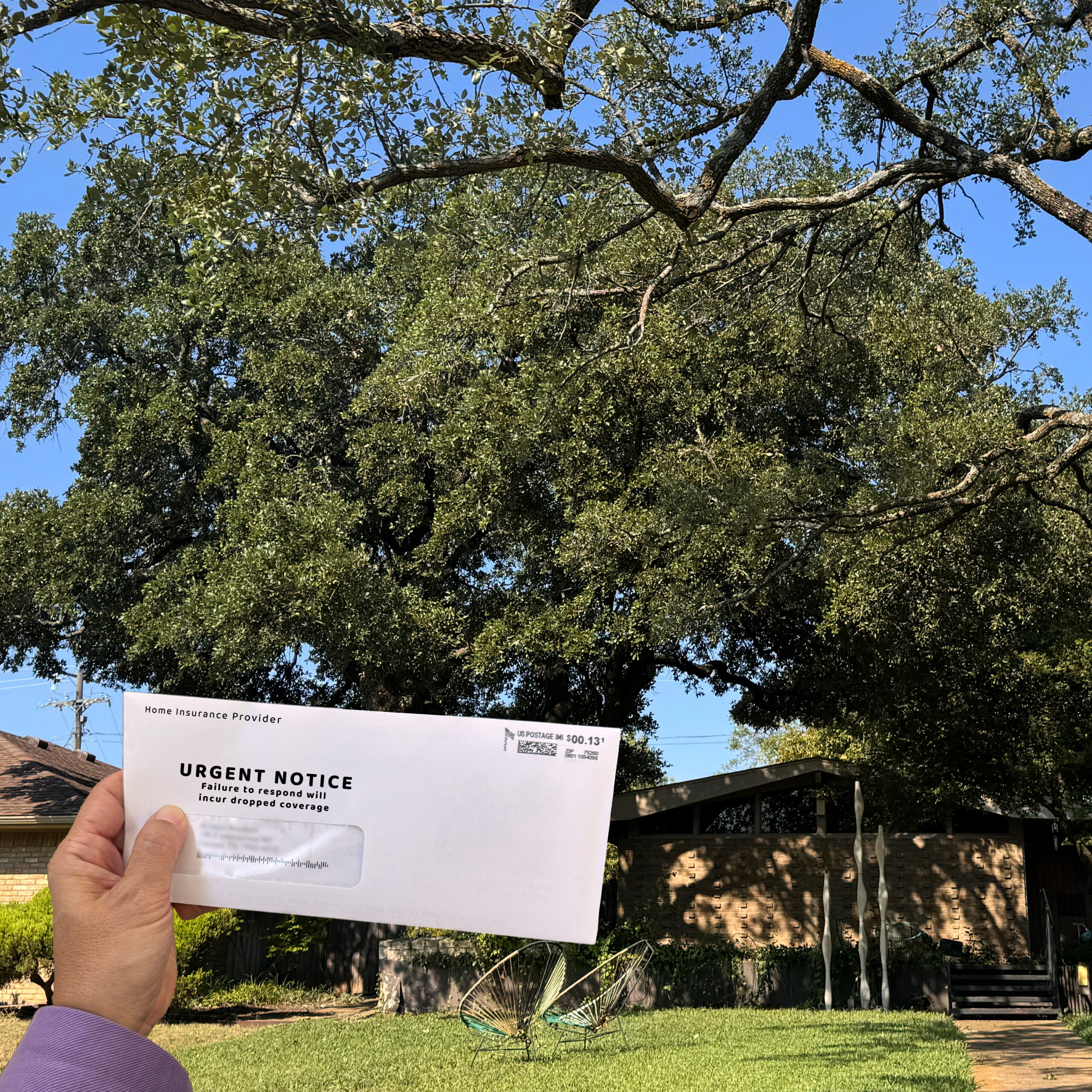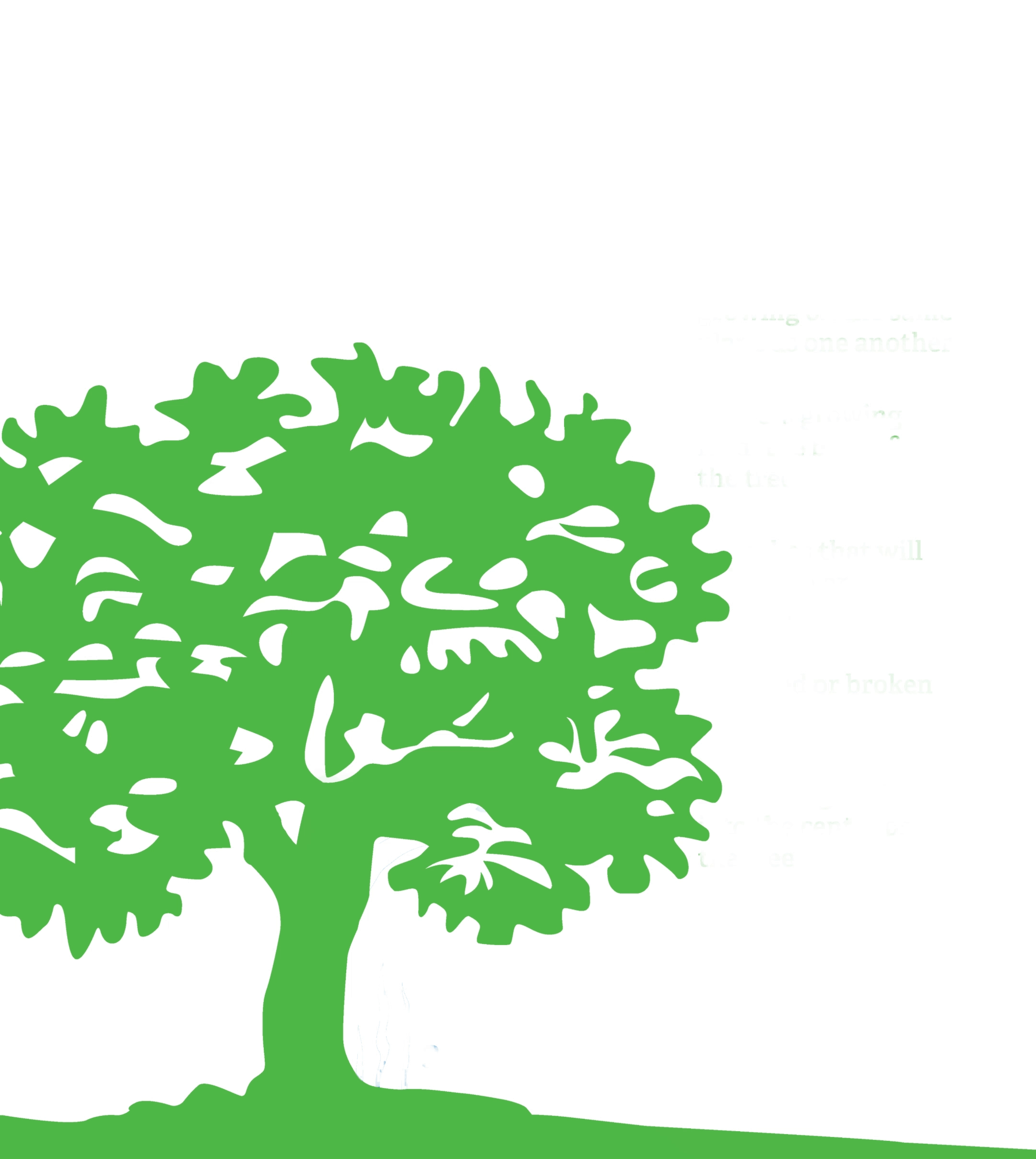Why is Topping Crape Myrtles (and Other Trees) Bad?

In late winter and early spring, it is common to see crape myrtles in North Texas with all of their canopies and upper branches removed, leaving only standing trunks. Understandably called “topping,” as the top of the tree is removed, this practice leads to twiggy new growth from the ends of the trunks. A year later, the new growth is removed again, and the process repeats itself. While crape myrtles are the most common victims of topping, larger trees can be topped as well. Any trees that survive topping exhibit similar growth patterns of uneven, thin branches growing from larger trunks. The practice of topping trees often comes from an uninformed and misguided attempt to avoid limb breakage, stimulate new growth, and control the size and shape of trees, but topping trees is bad for the trees and causes more problems than it solves.
Why Do People Top Trees?
There are several reasons that people may want to top their crape myrtles or other trees:
- Aesthetics
- Some people want to reduce the size of a tree for visibility
- Safety
- It may be thought that removing all of a tree’s branches eliminates risk
- Simplicity
- It can be much easier just to remove the top of a tree entirely, rather than use proper pruning techniques
- Habit
- In communities where the practice is common, tree topping can become the accepted norm
- Convenience
- Without large, spreading limbs, trees do not drop as many leaves, flowers, or seeds
- Turf grass
- Removing a tree’s canopy greatly reduces the shadow of a tree that may affect turf growth
- Growth Stimulation
- It is a common misconception that topping a flowering tree causes increased bloom production
Whatever the motivation, however, tree topping is never the best method to achieve the desired outcome, and is actually counterproductive in most cases.
What are Alternatives to Topping Trees?
Depending on your goal, there are different proper pruning techniques that can help shape your trees.
Reducing size
- Raising the canopy and removing upper or outer branches can go a long way toward reducing the overall size of a tree
- While limb stubbing is not recommended, in certain cases, limbs can be trimmed back from the ends
- Consider replacing oversized trees with species that are better suited to the location and don’t require drastic reshaping
Reducing risk
- Removing all the branches of a tree is not the best way to reduce risk
- Removing the canopy exposes the trunk to more light and heat, which can cause sunburn and sun scald, both of which can lead to decay and tree deathIn most cases, removing dead, dying, or broken limbs and thinning the canopy’s interior growth is sufficient to prepare the tree for high winds or severe storms
- Consult an ISA Tree Risk Assessment Qualified Arborist for an evaluation of your trees’ specific needs
Simplifying maintenance
- Topping a tree stimulates rapid, uneven growth which leads to more trimming
- Natural, proper trimming allows a tree to stay balanced, and go longer without needing maintenance
- Canopy cleaning reduces interior growth to help control excess leaf, flower, or seed drop
Light transmission
- Proper thinning of a canopy can greatly increase the amount of light that reaches the ground while keeping a tree healthy
- Consider planting shade-friendly understory plants and ground cover that can live in harmony with trees
Flower production
- While it is true that trees such as crape myrtles flower on each year’s new growth, natural trimming allows branches to mature and develop more budding sites
- Mature growth is hardier and less susceptible to sap-sucking insects like aphids, reducing the risk of common crape myrtle diseases

Don’t They Top Trees in Europe?
In some areas, mature topped trees with long, twiggy new growth are common. This practice is called pollarding. Pollarding is one of a few techniques that is used to produce specific sizes of wood for specific uses. Wood from pollarded trees is often used for firewood, basket weaving, and fence making. A related practice known as coppicing involves removing almost the entirety of a tree’s above-ground growth to create a small group of young stems. In these cases, the new growth is allowed to mature for a number of years until it reaches a desired size and can be harvested.
What is the Best Way to Trim a Crape Myrtle?
Whether you are looking for beautiful flowers, a particular canopy shape, or less maintenance effort, crape myrtles, just like all trees, can thrive with proper, natural pruning. While it may take some time to rehabilitate a crape myrtle or other tree that has been topped, even mature trees can be brought back to their natural beauty and health. Consult an ISA Certified Arborist for guidance on your trees’ specific needs.
At Texas Tree Surgeons, we love trees (even the topped ones!) and we love our community! While it may be common in North Texas to top crape myrtles each year, proper, natural trimming is the right choice in any situation. Contact us today to have one of our arborists take a look at your crape myrtles or other trees that may have been topped in the past so that we can help you bring them back to their natural beauty!
Related Blogs
Similar blogs related to this topic


Facts About Home Insurance & Trees
It’s becoming way too common, especially in Texas, homeowners receiving a threatening letter from their insurance company to drastically remove all tree limbs over a structure to prevent them from falling onto the house. Don’t…
Read more
How Often Should You Trim Your Trees?
Tree trimming is a crucial part of maintaining a healthy, safe, and beautiful yard. But how often should you really be trimming your trees? We’ll explore the ideal trimming schedule for your trees and why…
Read more

What is Prescription Pruning Qualification?
Prescription Pruning Qualification is vital for anyone involved in the care and maintenance of trees, ensuring they are pruned correctly and sustainably. This qualification is built from the years of research from industry leaders such…
Read more
